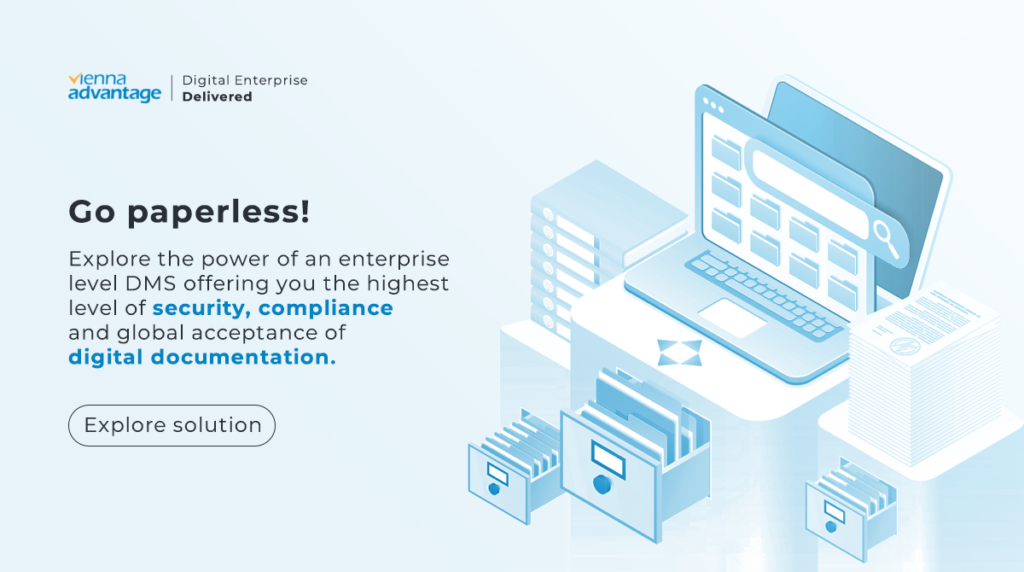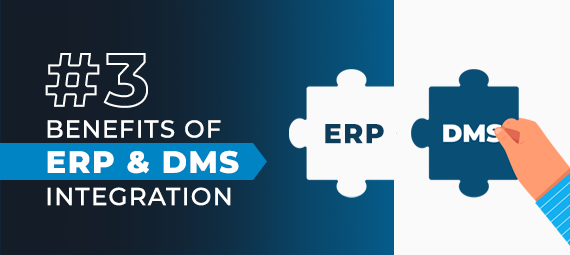An ERP system is at the heart of your digital enterprise. Besides being the custodian of all enterprise data, it also helps companies collaborate with external business partners and meet all compliance requirements. From purchasing to sales and from accounting postings to inventory updates, an ERP solution acts as the nerve center that feeds crucial analytics to support business decision making.
However, at the end of the day, an ERP is an order recording mechanism and orders are just that – transactions recorded in an electronic system for the purpose of record keeping. But besides transactions, organizations deal with another important class of information – documents. While ERP orders primarily store quantitative information about a transaction, documents store the corresponding qualitative ones. It is therefore important for an ERP system to have an embedded Document Management System.
In this article we explore 3 key reasons to have such a native ERP and DMS integration.
#1 Enhanced Collaboration with Business Partners
Imagine a scenario where your purchase department publishes a Request for Quotation (RFQ) to several potential vendors. Your purchase executive would create this order in the ERP system. Upon publishing this order, your preferred vendors would be able to view and respond to the RFQ. However, the purchase executive would need to send several documents – from Bill of Quantities to Specifications and Engineering Drawings – to each shortlisted vendor. In most cases, there could be several versions of these documents and beyond a point, it becomes unmanageable to share these documents via emails and messaging applications.
Instead, if a DMS were to be integrated with the ERP, these documents could easily be attached to the RFQ order for easy viewing and sharing with all relevant vendors for that order. Not just that, all version updates to these documents could easily be handled via the DMS, ensuring that all stakeholders to the transaction view the updated version of these documents.
It quickly becomes evident that an ERP and DMS integration has tremendous value to users. Such a setup would centralize all transaction data – qualitative and quantitative in one single system allowing for enhanced collaboration and reduced administrative overheads for users across departments.
#2 Enriching User Experience with ERP and DMS integration
With a DMS such as VIENNA Advantage Document Management System, when a document is uploaded, it gets read by an Optical Character Recognition software and is indexed based on the document content. When a document linked to a transaction gets indexed, users can search for orders with document content as the search string. In addition to the document content-based search, a DMS could also perform search based on the document metadata – including employee or business partner name. The document metadata can easily be customized to the organization’s needs. This feature is a tremendous benefit for the Finance, Accounting, Procurement and Human Resources functions. These departments deal with high volumes of attachments and documents and use a significant amount of transaction and document workflows.
#3 Enhance Compliance and Auditability
An ERP and DMS integration by default enhances the auditability of your ERP system. With an integrated DMS, all documents related to a transaction can be stored, retrieved, and verified in the context of that transaction. This means easy document tagging and ease of record keeping for your functional teams. No longer would you need to search for supporting documents during the process of statutory audits of your transactional system.
For example, scanned copies of invoices can be directly attached to accounts payable transactions of the respective vendors. Likewise, auditors can view all versions of specifications documents and bill of quantities that the purchase department may have used to carry out high value purchases.
When orders go through internal approval workflows, approvers can have visibility of all related qualitative information on the order and make a more informed decision on each order that lands in their approval inbox. This also gives your legal and compliance teams end-to-end visibility on not merely the order’s approval, but also all associated documents that accompany the order to be approved. Data and document retention is an important consideration for companies operating in certain jurisdictions that enforce a high priority on customer data and privacy. For companies operating in such jurisdictions, it is crucial to ensure that the customer and supplier documents that are compiled in the course of business follow stringent data regulation guidelines. Audit on these requirements are stringent and non-compliance may be expensive to the company in more than one way. Integrating a Document Management System in your ERP provides a safe way to ensure compliance to these data retention regulations.

When deciding on an ERP solution, leaders must consider passive requirements from their users – those requirements that are not explicit but can provide significant productivity and efficiency leverage when incorporated into the enterprise’s digital core. The integration of a Document Management System with the ERP is one such requirement.
ERP and DMS integration with VIENNA Advantage
VIENNA Advantage ERP comes with an integrated DMS solution. Our customers have endorsed this integration as one of the most significant benefits of adopting the VIENNA Advantage platform. VIENNA Advantage also offers its DMS as an independent solution for organizations to integrate with their existing ERP solutions. The DMS comes with a comprehensive web services layer that enables easy and flexible integration with several popular ERP applications. Along with the standalone DMS also comes the ability for customers to configure new document workflows or incorporate documents in existing ERP workflows.




